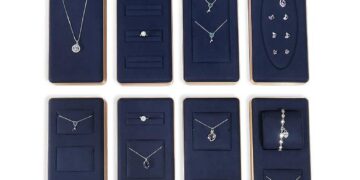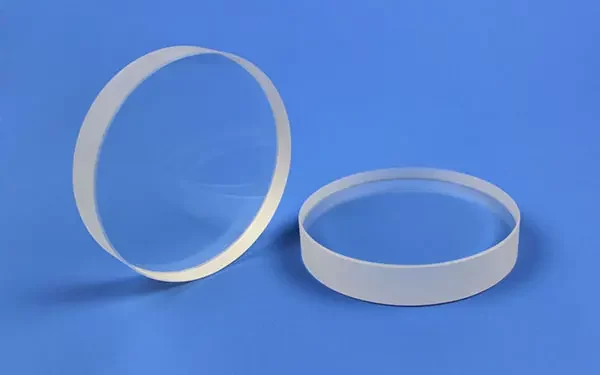Are you in the market for a sight glass for your industrial equipment? A sight glass is an essential system component involving fluids, gases, or steam. It allows you to visually inspect the process and monitor its flow. However, not all custom glass are created equal, and choosing the right one can make a significant difference in your operations. This article will discuss the five things you should consider when picking a sight glass.
Type of Sight Glass
Many types of sight glasses are available on the market, including flat, tubular, reflex, and circular. Each type has its advantages and disadvantages, depending on your application. Dull sight glasses are the most common and offer a low profile, but they are unsuitable for high-pressure applications. Tubular sight glasses are excellent for high-pressure applications but can be challenging to clean. Reflex custom glass provides excellent visibility but can be sensitive to temperature changes. Circular sight glasses suit high-temperature applications but may require custom glass cutting.
Materials of Construction
Sight glasses can be made from various materials, such as borosilicate glass, tempered glass, quartz, and plastic. Your chosen material depends on the process media, temperature, pressure, and chemical compatibility. Borosilicate glass is the most common and offers excellent chemical resistance, high-temperature tolerance, and low thermal expansion. Tempered glass is more robust and resistant to thermal shock but cannot withstand sudden temperature changes. Quartz is ideal for high-temperature and corrosive applications but is more expensive than other materials. Plastic custom glass are affordable and lightweight but may not be suitable for high-pressure or high-temperature applications.
Regarding monitoring liquid levels in a tank or vessel, two common devices come to mind: custom glass and magnetic level indicators (MLIs). Both offer their unique advantages and disadvantages depending on the application. In this article, we will compare and contrast the two technologies, providing you with the knowledge you need to decide your needs.
Understanding Sight Glasses
A sight glass is a transparent tube or window that allows operators to visually monitor liquid levels in a tank or vessel. They are typically made from custom glass and come in various shapes and sizes to accommodate different applications. custom glass is often used when the monitored liquid is clear and the pressure and temperature are not extreme.
Advantages of Sight Glasses
One of the main advantages of custom glass is its simplicity. They are easy to install and require minimal maintenance, making them cost-effective. Additionally, sight glasses can be customized for specific applications, including high-pressure and high-temperature environments. They also offer a clear, unobstructed view of the liquid being monitored.
Disadvantages of Sight Glasses
One major disadvantage of sight glasses is that they can be fragile and prone to breaking. This can be dangerous if the liquid being monitored is hazardous or under high pressure. Additionally, the custom glass may not be suitable for applications where the fluid being monitored is opaque or has a high viscosity.
Understanding Magnetic Level Indicators
Magnetic level indicators (MLIs) use a float with a magnet inside to track liquid levels. As the float moves up and down with the liquid level, it triggers a magnetic field read by a sensor outside the tank or vessel. MLIs are often used in applications where the monitored liquid is opaque or has a high viscosity.
Advantages of Magnetic Level Indicators
One major advantage of MLIs is their durability. They are less prone to breaking than sight glass, making them a safer option for hazardous applications. Additionally, MLIs can provide accurate level readings even in applications where the liquid being monitored is opaque or has a high viscosity. They are also available in a variety of materials to accommodate different environments.
Disadvantages of Magnetic Level Indicators
One major disadvantage of MLIs is their cost. They are typically more expensive than sight glass, making them a less cost-effective solution. Additionally, MLIs may require more maintenance than sight glass due to their more complex design. They may also be more difficult to install, requiring specialized knowledge and tools.
Choosing the Right Solution
When choosing between a sight glass and a magnetic level indicator, it is important to consider the specific requirements of your application. Factors such as the type of liquid being monitored, the temperature and pressure of the environment, and the level of accuracy required all play a role in determining the best solution.
Generally, a sight glass may be the best option if you monitor a clear liquid in a low-pressure, low-temperature environment. If you are watching an opaque or viscous liquid, or if the liquid is hazardous or under high pressure, a magnetic level indicator may be the better choice.
Pressure and Temperature Ratings
Sight glass must withstand the pressure and temperature of your process media without cracking, leaking, or breaking. The pressure rating is usually expressed in PSI (pounds per square inch), while the temperature rating is expressed in degrees Celsius or Fahrenheit. Be sure to choose a sight glass with a pressure and temperature rating that exceeds your process requirements. You should also consider the thermal expansion of the sight glass material, as sudden temperature changes can cause cracking or shattering.
Size and Visibility
The size and visibility of your sight glass depend on your process requirements and the available space. A larger custom glass provides better visibility but may require more space and increase the cost. A smaller sight glass may be more affordable and need less space but offer limited visibility. You should also consider the location of the sight glass and whether it is easily accessible for inspection and cleaning.
Compatibility with Process Media
The most critical factor when selecting a sight glass is its compatibility with your process media. The custom glass must be chemically resistant to the process media and not react or degrade over time. If the process media is corrosive or abrasive, you may need to choose a more durable sight glass material or consider a protective coating or lining. You should also consider the cleanliness of your process media and whether it can cause fouling or buildup on the sight glass surface.
Conclusion
Choosing the right sight glass for your industrial equipment ensures reliable and efficient operations. Consider the type of custom glass, materials of construction, pressure and temperature ratings, size and visibility, and compatibility with process media. Consult a trusted supplier or manufacturer to determine the best sight glass for your application.
Read More About : refixmag






























